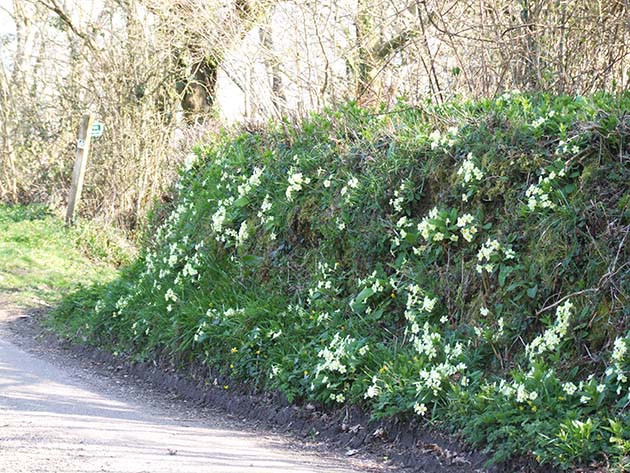Well, I guess that a large proportion of my readers around the world will be locked in against the Coronavirus pandemic, in one way or another. A friend in Sri Lanka is facing enforced curfews, and there are massive queues for food when they are lifted, which rather defeats the object.
It’s rather less draconian here in Britain, and we are at least allowed out for exercise, although the police helicopters seem to prefer to target lone dog-walkers in remote areas than clusters of young people in city parks. We’re particularly lucky here, since “outside” is the depths of the countryside, and in fact the countryside at its spring best. So for those trapped in the cities, maybe these notes will refresh your soul.
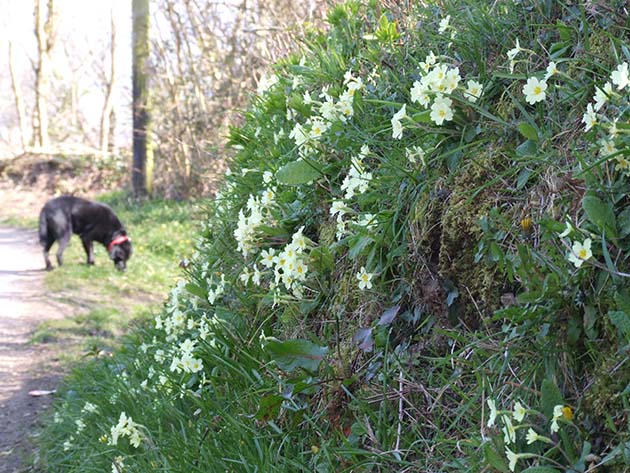
Best of all are the primroses which, as the YouTube clip at the end shows, have gladdened the hearts of English people for centuries (together with other, less innocent, delights).
Hereabouts they cover the Devon banks prodigally, and show that even the most functional livestock barriers will eventually become hosts to the beauties of God’s creation.
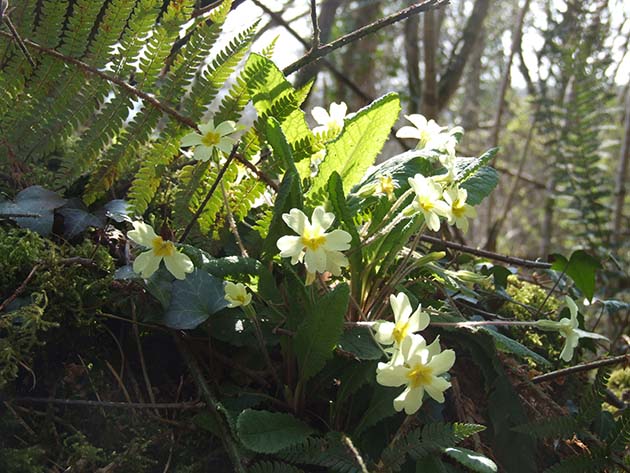
It’s the pale fresh lemon-yellow of the primrose that renders it an icon of spring, somehow reminiscent of the still bashful sunshine when compared to the equally prolific, but more conventionally yellow, lesser celandine, seen here with one of my personal favourites, the understated greater stitchwort.
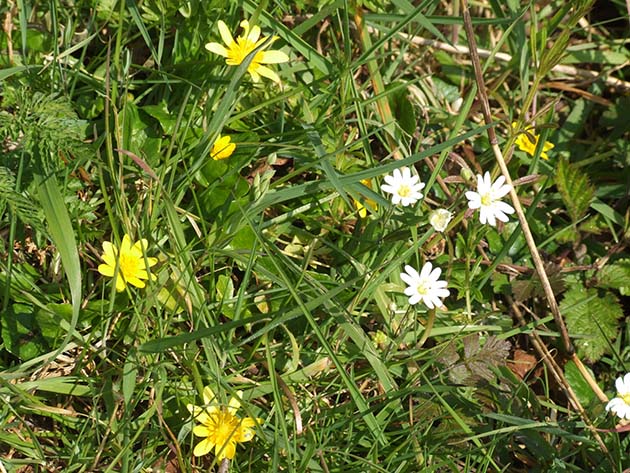
At every scale, deadly viruses notwithstanding, nature is faithfully repeating the annual cycle of new life, from the uncurling harts tongue ferns on the banks…
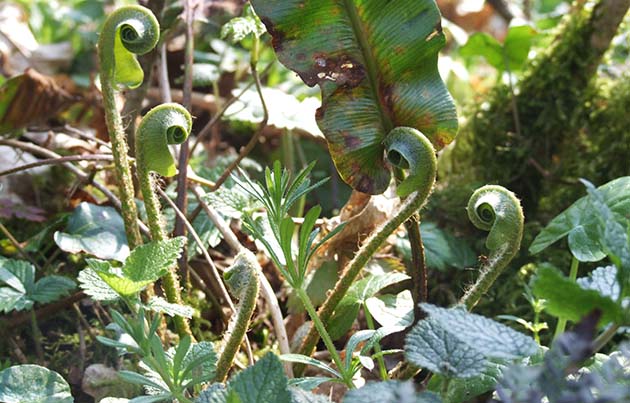
To the new leaves on the oaks and alders adjoining the turbary-land overlooking the valley:
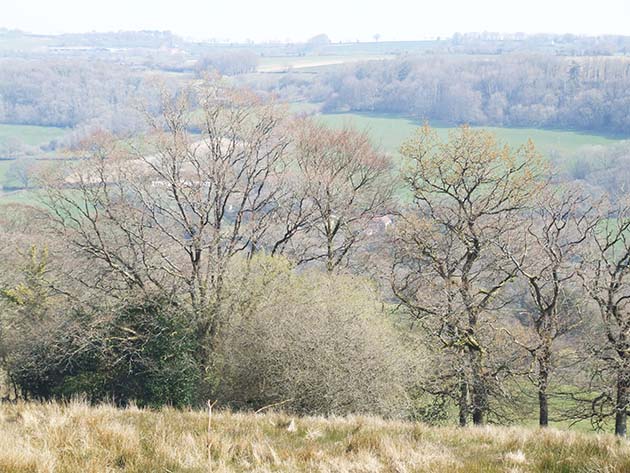
Back in the garden the late daffodils and narcissi are still in flower, another emblem of spring since at least the time of William Wordsworth. At this time of year every roadside verge in England seems to be covered with daffodils (if we were only allowed to drive out and see them!). Mostly, even out here in the country, they are cultivated varieties. This suggests the concerted efforts of many ordinary folk to beautify the public landscape, though here in the west, daffodils destined for the cut flower trade used to be grown on the roadsides, and some rare types persist only as vestiges of that vanished industry.
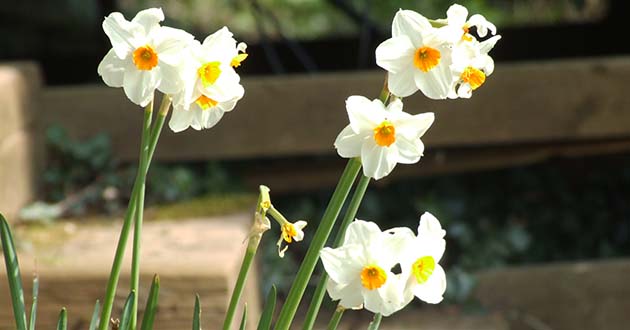
In Wordsworth’s time (though less so now) the daffodils he saw “beside the lake, beneath the trees/ fluttering and dancing in the breeze” were the wild native type, fifty or so of which I’m please to say I’ve planted on a wilder part of our land this year, and very tasteful and un-ostentatious they looked too (though they’re past their best now).
Is God cruel to allow pathogenic viruses in his creation as well as the banks of sweet primroses? i guess your answer may depend on whether you’re a “glass half-full” or a “glass half-empty” person. But I suspect it may also depend on how much you get out amidst God’s good earth and open your eyes to the bigger picture.
